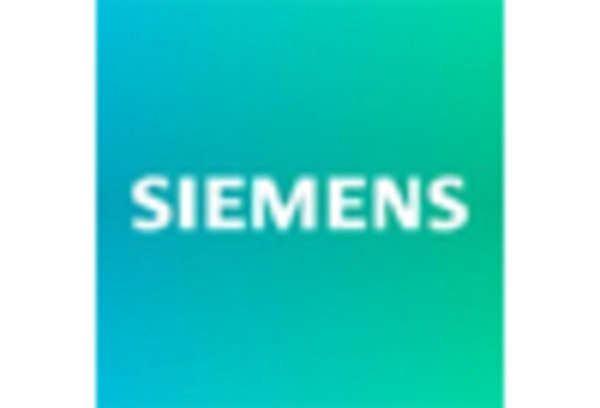Rising Demand for Efficiency
The Terminal Automation Market experiences a notable surge in demand for enhanced operational efficiency. Companies are increasingly adopting automated systems to streamline processes, reduce human error, and optimize resource allocation. This trend is driven by the need to improve throughput and minimize operational costs. According to recent data, the implementation of terminal automation can lead to efficiency gains of up to 30%. As industries strive to meet growing consumer expectations, the focus on automation becomes paramount. The Terminal Automation Market is thus positioned to benefit from this shift, as organizations seek to leverage technology to achieve competitive advantages.
Growth of E-commerce and Logistics
The Terminal Automation Market is significantly influenced by the rapid growth of e-commerce and logistics sectors. As online shopping continues to expand, the demand for efficient terminal operations rises correspondingly. Automated systems facilitate faster processing of goods, thereby improving supply chain efficiency. Recent statistics indicate that the logistics sector is expected to grow at a compound annual growth rate of over 10% in the coming years. This growth necessitates the adoption of advanced terminal automation solutions to handle increased volumes and ensure timely deliveries. Consequently, the Terminal Automation Market is poised for substantial growth driven by these evolving logistics demands.
Technological Advancements in Automation
Technological advancements are a key driver in the Terminal Automation Market, as innovations in automation technologies continue to emerge. The integration of artificial intelligence, machine learning, and the Internet of Things is transforming terminal operations, enabling real-time monitoring and predictive maintenance. These advancements not only enhance operational efficiency but also reduce downtime and maintenance costs. The market is witnessing a shift towards smart terminals that utilize these technologies to optimize performance. As organizations seek to modernize their operations, the Terminal Automation Market is likely to experience robust growth fueled by these technological innovations.
Regulatory Compliance and Safety Standards
In the Terminal Automation Market, stringent regulatory compliance and safety standards play a crucial role in shaping market dynamics. Governments and regulatory bodies are increasingly mandating the adoption of automated systems to enhance safety and reduce risks associated with manual operations. This regulatory push is particularly evident in sectors such as oil and gas, where compliance with safety protocols is non-negotiable. The market is projected to grow as companies invest in automation solutions that not only meet regulatory requirements but also enhance operational safety. The Terminal Automation Market is thus likely to see increased investments in technologies that ensure compliance and safety.
Increased Investment in Infrastructure Development
The Terminal Automation Market is benefiting from increased investment in infrastructure development across various sectors. Governments and private entities are allocating substantial resources to enhance terminal facilities, which often includes the integration of automated systems. This investment is particularly evident in transportation and logistics hubs, where modernization is essential to accommodate growing trade volumes. The market is projected to expand as these infrastructure projects incorporate advanced automation technologies to improve efficiency and safety. As a result, the Terminal Automation Market stands to gain from this influx of investment aimed at upgrading and expanding terminal capabilities.


















Leave a Comment